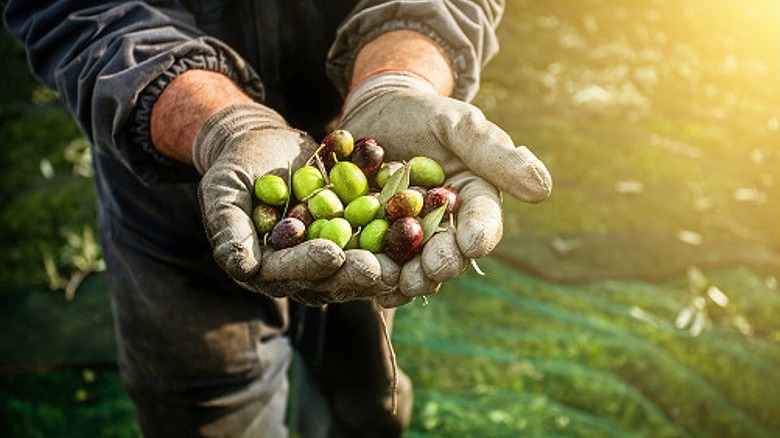What Country Produces The Most Olive Oil In The World?
Even those who would never allow a single olive past their lips can find some use for its oil. A lighter, more neutral-flavored oil than some of its brethren, olive oil is perfect for sauteing veggies or for tossing in your salad for a quick dressing. Catholic priests use it to anoint the sick, and the ancient Greeks rubbed it all over their bodies when exercising in the gymnasium. It even lends its name to Popeye's girlfriend!
But where does it come from? It's easy to take modern logistics for granted: when you're in the supermarket stocking up for a busy week, it may not matter whether your olive oil comes from Spain or Italy or from magic sprites who replenish the stock while mortals sleep. But supply chain disruptions caused by the pandemic (and future ones caused by climate change) have reinforced the importance of knowing the source of your goods – so it's worth asking which countries produce the most olive oil.
Spain is the world leader in olive oil
One might assume that the world's leading olive oil producer would be Italy. In America, olive oil is associated most closely with Italian cuisine: our leading Italian casual dining chain is called Olive Garden, after all, and Don Corleone used his successful olive oil company as a front for his criminal enterprise in The Godfather. But no: the world leader in olive oil is Spain, and it's not particularly close.
From 2023 through 2024, Spain is expected to produce 766.4 metric tons of olive oil, more than its next three closest competitors combined. That's enough to account for 45% of the global olive oil market. Over 75% of Spain's olive oil comes from the Andalusia region, especially from the province of Jaén, which boasts the world's largest olive oil mill in the village of Villacarrillo. In fact, a significant amount of olive oil advertised as being from Italy is actually from Spain.
Italy, Turkey, and more round out the top five
At second place in the Olive Oil Olympics, Italy is expected to produce 288.9 metric tons of olive oil from 2023 through 2024 — certainly no slouch, but far behind Spain. So why does Italian olive oil have such cultural cachet in America? It may be because of Italy's post-war economic boom coinciding with the isolationist regime of Francisco Franco in Spain, allowing, according to Vox Europ, for "Italian immigration [to act] as an ambassador for olive oil".
Rounding out the top five are Turkey (210 metric tons of olive oil from 2023 through 2024), Tunisia (200 metric tons), and Greece (195 metric tons). If you're sensing a pattern, there's a good reason for that: olives thrive in a warm climate that offers plenty of rainfall in the winter to rejuvenate the soil, and the Mediterranean offers just such an environment. One of the few places in America with such conditions is along the coast of California, which is why you see so many olive trees and grape vineyards in places like Napa and Sonoma.


